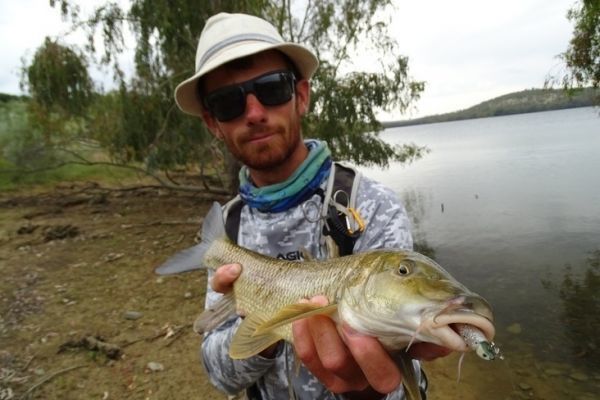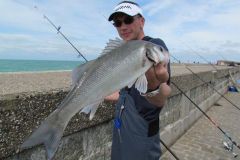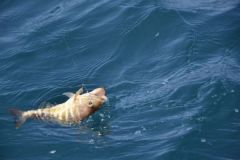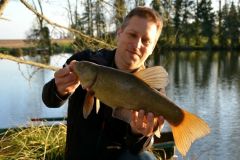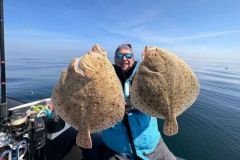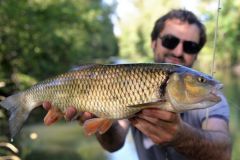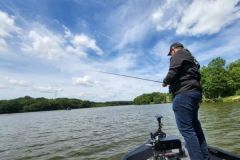The barbel, an omnivorous and opportunistic cyprinid
The common barbel is a fish of the Cyprinidae family, just like the carp. Elongated and streamlined, they can grow up to a metre long, offering you long, powerful, muscular battles.
Like the carp, its mouth is equipped with barbels. If you look closely at its downward-facing position, it's easy to see that the barbel is a fish that lives and feeds on the bottom. In fact, it likes to burrow into the substrate to feed on insect larvae and crayfish, which are particularly abundant in French rivers.
It's precisely by imitating this prey and targeting the right spots that you can catch barbel with regularity.
In Spain, there is another variety of barbel, the comizo barb which reacts to a wide variety of lures, demonstrating that this species of fish is not only sensitive to natural baits.
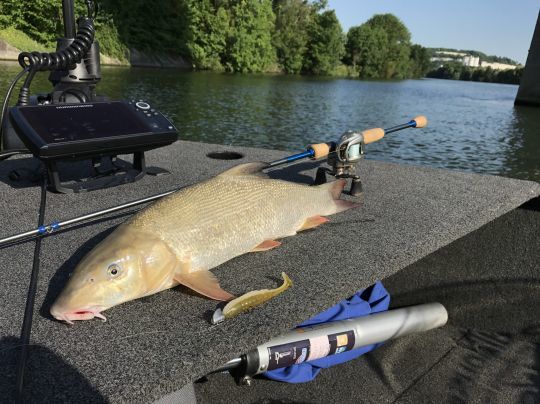
Good spots for barbel fishing
The barbel is a fish that loves fast-flowing water, and thrives on sand, gravel and pebbles. In many rivers, such as the Loire, it is a species that can be found in large numbers.
In areas where you have the opportunity to hook a barbel, you may catch several during the same outing, as they are often found in shoals of a few individuals.
So, I recommend you look for marked current veins with hard bottoms. Reading the water is essential for identifying spots.
Typically, the bottoms of dams, weirs and sills, but also the heads and ribs of bridge piers are excellent. Slight pits or slopes on these same spots also regularly provide shelter for fish, as food accumulates there in abundance.
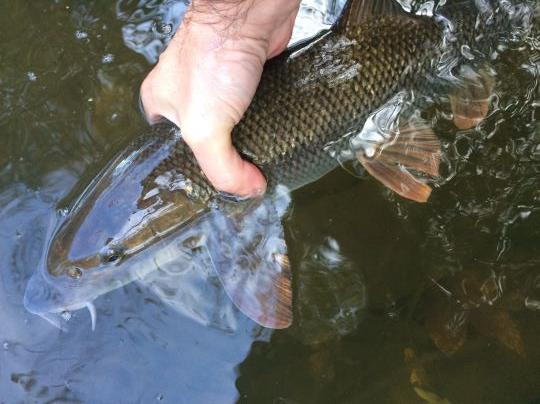
What approach?
An angler's first barbel are often caught by accident! Sometimes while fishing with blades or animated hard lures close to the bottom, but most of the time with soft lures looking for pike-perch or perch and scraping the bottom.
To target them, you need to imitate a crayfish, a prey they are very fond of. In this case, you'll need to set up a relatively heavy scraper fishery where, unlike the pike-perch, the aim is not to fly over the bottom, but to let the lure roll over the gravel.
The barbel's touch is quite recognizable, as it often takes place in two stages. It probably covers the lure with its head first, then engages it.
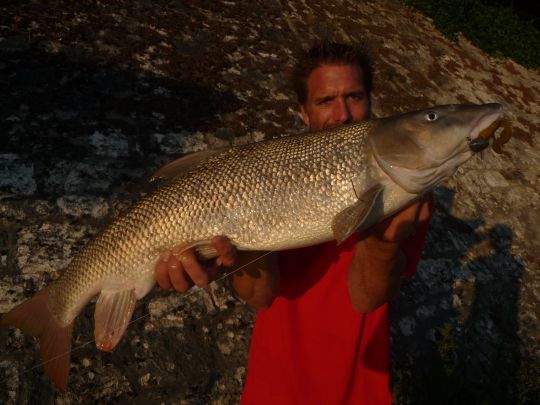
The right lures for barbel
Shads and finess will obviously allow you to catch your first barbel, but I particularly recommend using craws mounted on sabot or soccer heads.
A good alternative to avoid snags and let your lure roll on the substrate is to thread a drilled olive on your leader to which you connect a free Texas hook.
